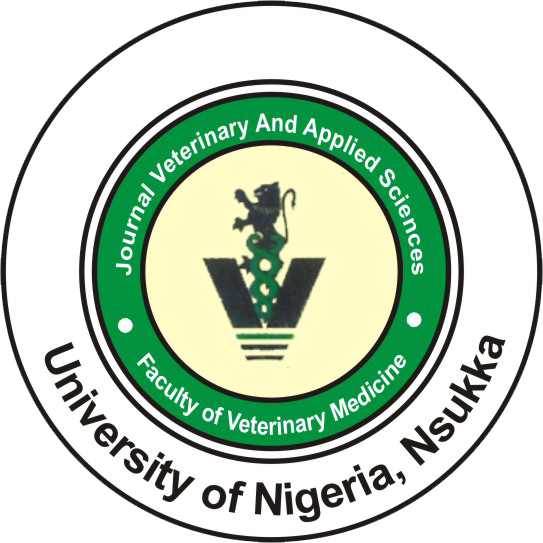University of Nigeria
ISSN: 2315 - 6856
e-ISSN: 2636 - 5553
Journal volumes
Powered by: RockSystems Global Services Ltd.
rocksystemsglobal@gmail.com (+2348035271306)
www.rocksystemsglobal.com
Volume 13, Issue 1: 2023 - Article 4
Abstract:
This study evaluated the effects of hemi-castration on the reproductive hormone profile, sperm reserves and testis histoarchitecture of pubertal male albino rats. Seventy two male albino rats of seven weeks of age were used for the study. They were randomly assigned to three groups: Sham operated control (SOC), Left hemi-castrated (LHC) and Right hemi-castrated (RHC) groups. The surgical procedures were performed under general anaesthesia. Blood samples were collected from three rats in each group on Days 1, 3, 7, 14, 28 and 63 days post-surgery for hormonal assay, and afterwards the rats were euthanized and the testis and epididymis were collected. Determination of serum concentrations of luteinizing hormone (LH), follicle stimulating hormone (FSH) and testosterone, and evaluation of cauda-epididymal sperm reserves and testes histoarchitecture were done following standard methods. Testis and epididymis weight percent of body weight (WPOBW) were calculated. The LHC rats had significantly (p < 0.05) higher mean LH concentrations when compared to SOC rats on day 7 and significantly lower (p < 0.05) mean FSH levels compared to SOC rats on day 1. The mean testosterone concentrations and caudal epididymal sperm reserves did not significantly vary (p > 0.05) among the three groups. The seminiferous tubular diameter and epithelial heights of RHC rats was significantly higher (p < 0.05) than that of the SOC rats on day 63 only. There were no obvious alterations in the histoarchitecture of the testes in all groups. The RHC rats had significantly higher (p < 0.05) testicular WPOBW than the SOC rats on days 7 and 14. There were no significant variations (p > 0.05) in the epididymal WPOBW among the groups all through the study period. It was concluded that no significant laterality to hormonal compensation or augmentation of extra-gonadal sperm reserves occurred in the pubertal hemi-castrated rats. Testosterone compensation in the hemi-castrated rats in the absence of FSH or LH elevation substantiated the theory that enhanced testicular LH-sensitivity, mediated by the secretion of more potent isoforms of FSH, underpins testosterone augmentation in hemi-castrates.
Keywords: Hemi-castration; Reproductive hormone profile; Sperm reserves; Pubertal rats; Testis, Epididymis.
How to cite this article:
Awachie ME, Obidike IR and Ekere SO (2023). The influence of pubertal hemi-castration on the reproductive hormone profile, sperm reserves and histoarchitecture of the testis of male albino rats. Journal of Veterinary and Applied Sciences, 13(1): 129 – 141.
*Correspondence: E-mail:mark.awachie@unn.edu.ng Phone: +2347068267092

The influence of pubertal hemi-castration on the reproductive hormone profile, sperm reserves and histoarchitecture of the testis of male albino rats
Mark E. Awachie*1, Ikechukwu R. Obidike1 and Samuel O. Ekere2
1 Department of Veterinary Physiology and Pharmacology, Faculty of Veterinary Medicine, University of Nigeria, Nsukka. 2 Department of Veterinary Obstetrics and Reproductive Diseases, Faculty of Veterinary Medicine, University of Nigeria, Nsukka.
Download .pdf copy here >>






